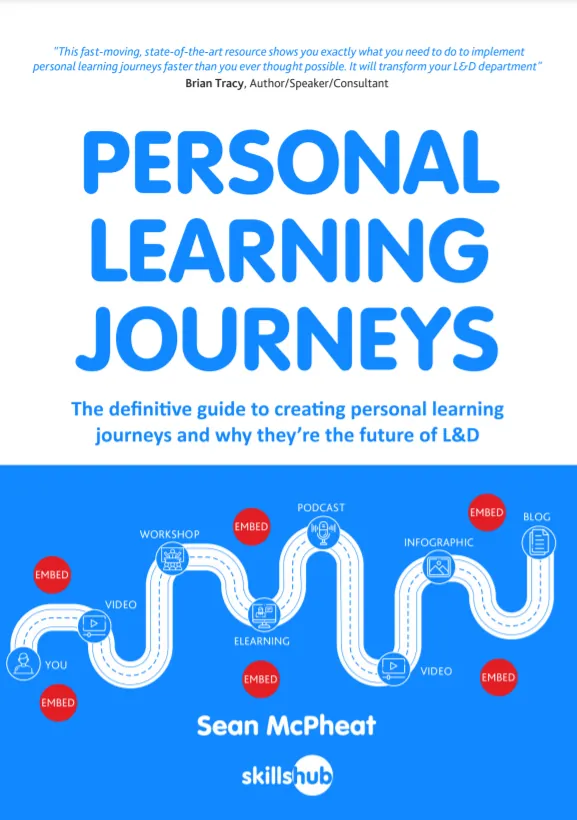We all know how important it is for us to use a variety of methodologies to help our learners embed new ideas and apply them in their real-world situations.
However, we often see training programmes that are very limited in the way learners’ senses are utilised to embed that learning and how the facilitators approach is just a complete turn off for knowledge retention and engagement.
In this blog we’re going to look at 3 specific areas to help encourage the engagement of our learners:
- How To Use VAK Learning Styles
- How To Use Embedded Commands
- How To Use Emotional Intelligence To Influence Learning
VAK Learning Styles
Here are some suggestions that you may wish to try out when you are engaging learners’ visual, auditory and kinaesthetic modalities:
Visual:
- Utilise colour more often, on slides and around the room/online
- Make handouts and online content resources vibrant and interesting
- Use visual triggers in the language you use
- See which videos can support your ideas
- Use mind-map technology to add interest and variety
- Use posters around the room to build awareness of some of the subjects being discussed
Auditory
- Use music during breaks, group breakout sessions and when introducing new subjects
- Get learners to act out scenarios
- Emphasise key points with pauses, changes in tone and in volume
- Use stories, similes and metaphors to make the information come alive
- Have quick Q&A sessions, paired discussions or breakouts to get learners talking
- Use descriptive and inspiring anecdotes to bring it to life
Kinaesthetic
- Get learners moving as frequently as possible
- Use feeling metaphors
- Have handouts and resources that can be touched and felt
- Use descriptive and emotional language to evoke feelings
- Have models they can build
- Have breakout areas that enhance their creative and innovative ideas during discussions
- Get learners to stand in the room, thrown ball or beanbags while they recite a new model or discuss their action plans
Remember to utilise a variety of these examples so your learners are exposed to an assortment of learning opportunities that stimulate and enhance their abilities to apply the concepts they are working with.
Using Embedded Commands In Your Learning
You’ll probably be aware that you have a conscious and an unconscious mind.
The conscious mind is used when we are aware of what we are doing, focusing on a task, or concentrating on a piece of work.
The unconscious mind is working non-stop 24/7, helping maintain our body’s equilibrium and all manner of other stuff that keeps us alive. (Were you aware of your breathing pattern, or the pressure your back was putting on your seat, until you just read that?!)
You can increase the power of any learning intervention you have with someone by tapping into their unconscious mind (the part that makes decisions without us being aware of it).
The best and most ethical way to do this is by using a linguistic turn-of-phrase known as ‘embedded commands’.
Can you remember a time when everything seemed to be in ‘flow’, where you were able to get things done effortlessly and enjoy the process?
That shows you are capable of repeating this anytime you wish.
You have that power to use whenever you want to.
Take a look at that paragraph again. Did you notice the bold words?
Those are embedded commands, words that hit the subconscious, so they go into our minds without us realising, and affect us at the core level.
The terms ‘you are capable’ and ‘have that power’ are instructions that are interpreted differently at the subconscious level than at the conscious level.
By putting a slight emphasis on the words that you wish to be sounded down, you make the subconscious pay more attention to them. They are ‘embedded’ in naturally-sounding sentences you use.
Here are some examples:
- I find that when we discuss this subject in our coaching sessions, people who go full out to enjoy the process have greater results and if you take this seriously, you’ll find that’s the case for you.
- You may be wondering how can I get the best from this event? I find many people take notes, many ask lots of questions and still others are open to new ideas.
- For our next exercise, I need a volunteer. You don’t have to volunteer, of course – I only want to run this with a volunteer so that everyone can learn a lot today
Do you notice what is going on in these sentences?
If you read them with a very slight emphasis on the bold words (not enough so it sounds stilted or noticed) those words will be picked up be the subconscious of the learners and will make a difference to the way they interpret the information.
Using embedded commands in an ethical way helps learners to see the value of the learning and assist them to put into practice the ideas you are discussing.
One final note: Make sure your embedded commands are given in the positive, so the subconscious knows what to do, rather than what not to do.
That would help the learning enormously.

Learn How To Create Personal Learning Journeys For FREE!
How Emotional Intelligence Can Influence Learning
When we are delivering courses via our LXP, virtual training or coaching, it can be difficult at times to keep our mind clear and use our developed interpersonal skills to get the best out of any learning intervention.
Too often, we lose concentration or focus and allow distractions to hinder the learning experience of the people we are working with.
How can we ensure that our focus is on the matter at hand, and give our learners the best possible experience?
Here are some tips that will assist us in making good decisions, cultivate trust, earn respect, and engender interdependence:
- Know your purpose, intent and desired outcome before starting any learning intervention. This sets the scene and allows for great planning
- Choose your response to everything that happens, instead of reacting. Distance yourself from what you see happening, so you open up a gap between stimulus and response
- Become self-aware, a key component of emotional intelligence. Your emotions and feelings will be sending messages all the time, so be aware of what those messages are saying to you
- Listen to people’s words, intent, and feelings
- Centre your attention on the speaker
- Don’t let any inner dialogue distract you
- Note their tone and non-verbals
- Keep your own belief systems, values and pre-judgements out of the equation
- Show empathy by putting yourself in their learning shoes. They may not fully understand the concepts you are discussing, so be aware of any gaps in their knowledge
- Watch that you don’t trigger any unintended defensive reactions. People have their own pre-conceived judgements and even little things can cause offence
- Make your persuasive cases appeal at the logical and emotional levels. Learners need both of these to ensure the ideas and concepts are sounded down fully
- Ensure any feedback is effective. Make it so it’s actionable and driven by positive motives
- Treat others’ opinions and ideas with an open mind. They may have ideas that you hadn’t considered before
- Ensure openness and trust and draw out hidden, opposing motives and beliefs. Other people’s ideas can sometimes create opportunities for growth, so don’t ignore them
By concentrating on some or all of these ideas, they will help you develop your skills and make any learning intervention a great experience, opening up both yours and your learners’ minds to new concepts and ideas.
As an eLearning company, Skillshub is committed to creating efficient and impactful learning experiences. Contact us to find out more.














